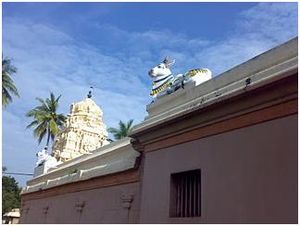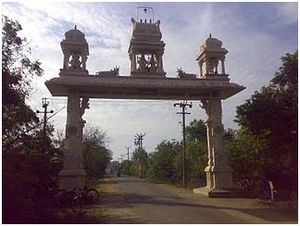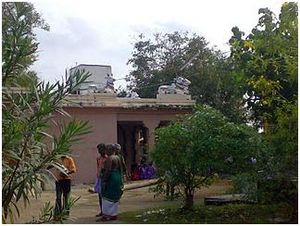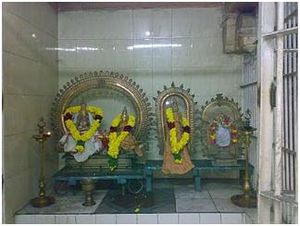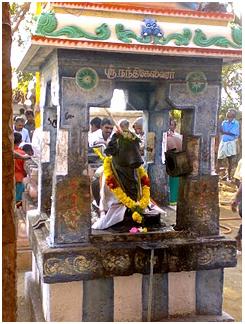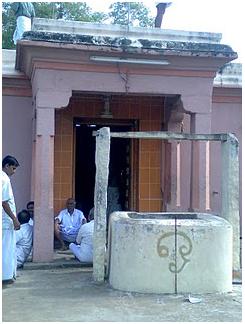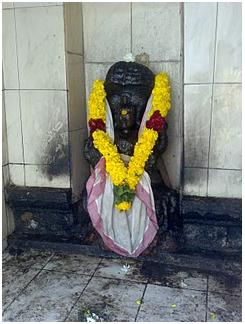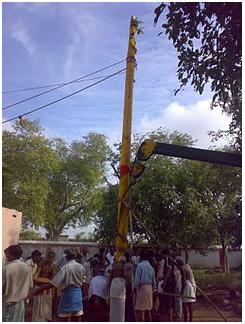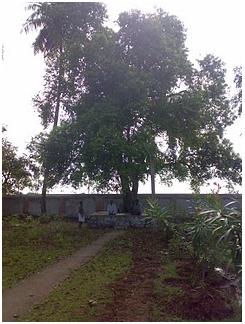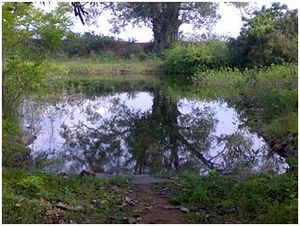Sembakkam Sri Jambugeswarar
Sembakkam village is situated about 45 kms from Chennai. It lies on the road connecting Thirupporur (OMR) and Chengalpattu and at about 7 kms while going from Thirupporur. There is an arch on the left side of the road, indicating the direction to the temple. The temple is about 1 km from the main road. Sembakkam has an ancient temple for Lord Shiva where the main deity is Sri Jambugeswarar and Goddess Sri Azhagaambigai. This temple is also called Vada Thiruvanaikkaa or Uthara Jambugeswaram as this temple also represents Water element. Moreover, this temple is also built by the same king Ko Chengannan who built the Thiruvanaikkaa Sri Jambugeswarar temple.
According to the legend, when Lord Muruga killed Soorapadhman (Soora Samhaaram) the head of the demon is believed to have fallen here and hence the place was known as Sirampakkam (Siram means Head in Thamizh). It is said that the name Sirampakkam got changed as Sembakkam down the generations. Even today, the flag hoisting ceremony of Thirupporur Sri Kandhaswamy temple (for Lord Muruga) is done by the people of Sembakkam. It is said that Sri Aadhiseshan along with Vasuki and other Naga Kanyas came here and worshipped Lord Shiva to get relieved of their sin as Sri Aadhiseshan spit Poison while churning the mighty ocean. Another story has it that Sage Naradha was explaining the sanctity of Sri Uthara Jambugeswarar to Lord Indra who didn’t pay much attention in listening to the sage. Because of this, Indra got into difficulties and came personally and worshipped Lord Shiva here.
As per Sthalapuraanam, the king Ko Chengannan who was childless was traveling across the country worshipping Lord Shiva at various places. When he reached Sembakkam the axle of his Chariot broke down here and he was resting at this place. Lord Shiva appeared in his dreams and directed him to build a temple here, where He would be called Sri Jambugeswarar along with Goddess Sri Azhagaambigai. The king built this temple for Lord Shiva and was blessed with a child.
This beautiful temple has a wide landscape inside the compound where a beautiful garden is maintained. Sri Jambugeswarar is facing east from a small sanctum with Dwarapaalakas guarding it. A beautiful Nandhi is facing the Lord here towards the sanctum. There are beautiful Urchava Murthies like Sri Natarajar, Sri Somaskandhar etc., kept in the Mandapam just outside the sanctum. Goddess Sri Azhagaambigai is facing south. At the entrance on the southern side, there is a well just near the entrance itself. It is said that the well was created by the Goddess itself which contains the powers of several crores of mantras. Sri Dhakshinamurthy, Sri Mahavishnu, Sri Brahma and Sri Durga are present around the sanctum at their respective directions. A new Dwajasthambham was being installed in the temple on 16.03.08 (when I visited).
A small, age old natural pond is found just near the temple entrance, which is said to be the source of water to enter the Sanctum. The temple is originally made in such a way that the water from this pond will always be percolating inside the sanctum to keep the deity always in water. But in later stages, as the temple has risen from the ground level, the water now does not enter the floor of the sanctum but remains in the pond and also under the ground level of the sanctum. Hence this Sthalam also represents ‘water’ similar to Thiruvanaikkaa. It is also said that this village has at least one temple every street. Many small temples are seen on the corners of many streets here. Sage Agasthiyar has visited this temple and worshipped the Lord here.
It is believed that many Siddhars gather here on Pournami days to offer their prayers. The Sthala Viruksham for this temple is ‘Naaval’ tree as same as Thiruvaanikkaaval. In Sanskrit ‘Jambu’ means ‘Naaval fruit’, and hence the Lord here is called Sri Jambugeswarar. The Naaval tree is present at the south east corner of the temple. Sembakkam is an ideal place for people who seek peace from ‘within’.

